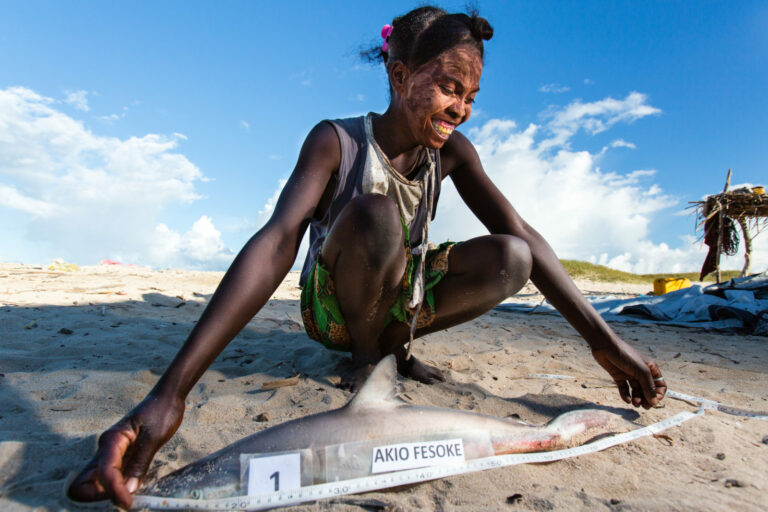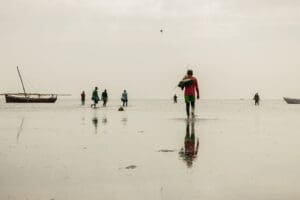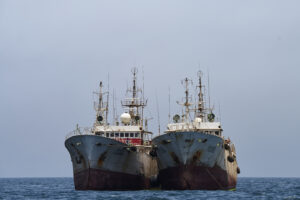Over 65,000 sharks are caught by traditional fishermen in southern Madagascar each year. Including estimates of total national catch from the country’s small-scale fishing fleet this could reach over 450,000 animals per year.
This is the striking finding of recent research published today in the journal Fisheries Research, highlighting the scale and composition of shark fishing by coastal communities in Madagascar.
Targeted fishing for sharks is an important economic activity for many so-called small-scale fishermen (those using non-motorised boats) throughout many Indian Ocean countries, with the animals targeted primarily for their fins, which are in high demand from Asian markets.
This study presents the first multi-year assessment of a small-scale Indian Ocean shark fishery. A network of trained community-based data collectors documented catches over a six year period from 2007-2012 along several hundred kilometres of southern Madagascar’s remote and arid Mozambique Channel coastline.
Community members were trained to record catch data in the Toliara region of the island. This participatory approach to gathering data enabled the research to take place across isolated areas, and the method has now been adapted to pilot the use of smartphones to collect fisheries data.
An estimated 20 species of shark and guitarfish species (Rhinobatidae) were recorded, of which 31% were Sphyrna lewini (scalloped hammerhead), a species listed as Endangered by the World Conservation Union’s Red List of endangered species.
Although the number of sharks landed annually did not decrease during the survey period, there was a significant reduction in the average size of sharks caught.
Despite multiple anecdotal reports of shark population declines, the research highlights the possibility that shark catches may have been maintained through changes in fishing gear and increases in the number of fishermen and the time spent fishing; factors which may mask a decline in shark populations.
The number of sharks taken by the traditional fishery in the study region was estimated to be between 65,000 and 104,000 per year, whilst estimates using national export and import of dried shark fin from Madagascar, and shark length data in this study, put total landings between 78,000 and 471,851 per year.
“While the catches appear high, these are highly conservative estimates since our study did not account for sharks caught by the large number of industrial boats fishing in Madagascar’s waters, many of which do not report shark catches”, said Humber.
“Some of these vessels target sharks directly, while others catch large numbers of sharks as by-catch, little of which is reported or landed in Madagascar.”
Reliable data on the total volume of sharks landed in Madagascar’s waters is scarce, in particular from foreign industrial boats both directly targeting shark species and as by-catch in fisheries targeting other species.
There is currently no legislation in place to protect sharks from overexploitation in Madagascar, and this research highlights an urgent need to address the lack of shark fishery management across the traditional, artisanal and industrial fisheries.
Find out more about the publication: http://www.sciencedirect.com/science/article/pii/S016578361630265X
Full reference:
Humber, F., Botosoamananto, R., Andriamahaino, E.T., Godley, B.J., Gough, C., Pedron, S., Ramahery, V. and Broderick, A.C. (2016) Assessing the small-scale shark fishery of Madagascar through community-based monitoring and knowledge. Fisheries Research, 2016.
DOI: 10.1016/j.fishres.2016.08.012























